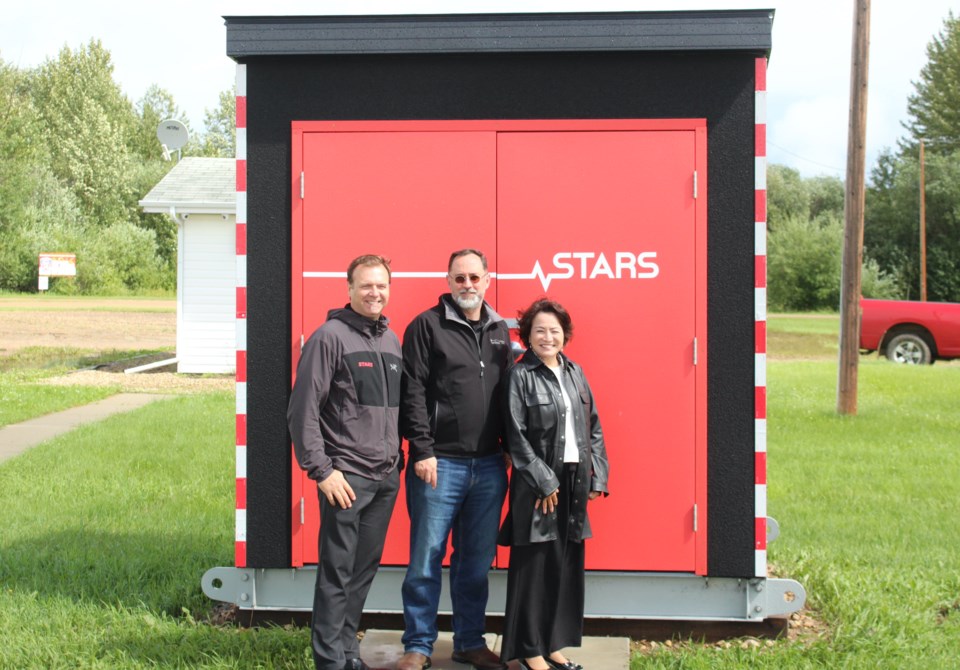ATHABASCA – Did you know the Shock Trauma Air Rescue Service (STARS) air ambulance has helped Athabasca County residents as far away as Manitoba?
Athabasca County councillors learned that fact, and many more, during an annual update from STARS municipal relations manager Glenda Farnden at the regular county council meeting June 26.
Since 2010, STARS has flown 508 missions in Athabasca County, including 181 inter-facility transfers from the Athabasca Healthcare Centre and 110 from the Boyle Healthcare Centre. Another 130 missions have been scene response and search and rescue calls, and the remainder are split across the region’s different hamlets.
“We cover many different areas within the county, including inter-facility transfers within your two hospitals,” said Farnden.
“It’s important to have a full picture on what is happening throughout your areas. For 2025 so far, six missions have been flown: four inter-facility transfers, and two scene calls, from Athabasca and Atmore.”
According to Farnden, Athabasca County benefits from its geographic location, with service from both the Grande Prairie and Edmonton bases possible depending on the location of the incident.
Since 2010, 226 Athabasca County residents have flown in a STARS helicopter, with 103 being picked up in the Athabasca region, and 123 from 29 other locations across two provinces, including a single flight from southern Manitoba.
“This really is a testament to the value of our partnership; accidents and illness can happen anywhere and as partners, you are helping to have access to STARS for your residents 24/7, all across Western Canada,” said Farnden.
Like 95 per cent of the municipalities in Alberta, the county contributes money to STARS on an annual basis — just under half of the $34 million budget comes from provincial government grants, while the remaining is covered by donations, the STARS lottery, and corporate events.
As part of its ongoing partnership with STARS, the county has been increasing its support in recent years. In 2024, the municipality bumped up its funding to a standing $15,000 a year, and a fuel cache was opened at the local airport in 2023.
“We celebrate you as a regional leader. Thank you for moving to that regional leader status, and a secure fixed rate of support each year. We appreciate it so much,” said Farnden.
“We celebrate the fact that we’ve always remained a charitable model for 40 years, with no cost to the patient. We wouldn’t be here today without partners like you.”
STARS averages 11 missions a day, with more than 65,000 missions flown since its inception 40 years ago.
As part of its mandate, STARS is always looking for new and innovative ways to help patients. One tool Farnden highlighted for councillors was a new medication that helped control hemorrhaging in severe trauma cases. The air ambulances have carried two units of universal blood for a decade, but thanks to the medication they’ve doubled that to four units.
“it’s important that we recognize that this is a game changer for areas such as yourselves, where you are a very remote, long distance type of areas where these patients wouldn’t have had a chance but now we’ve increased it again,” said Farnden.



